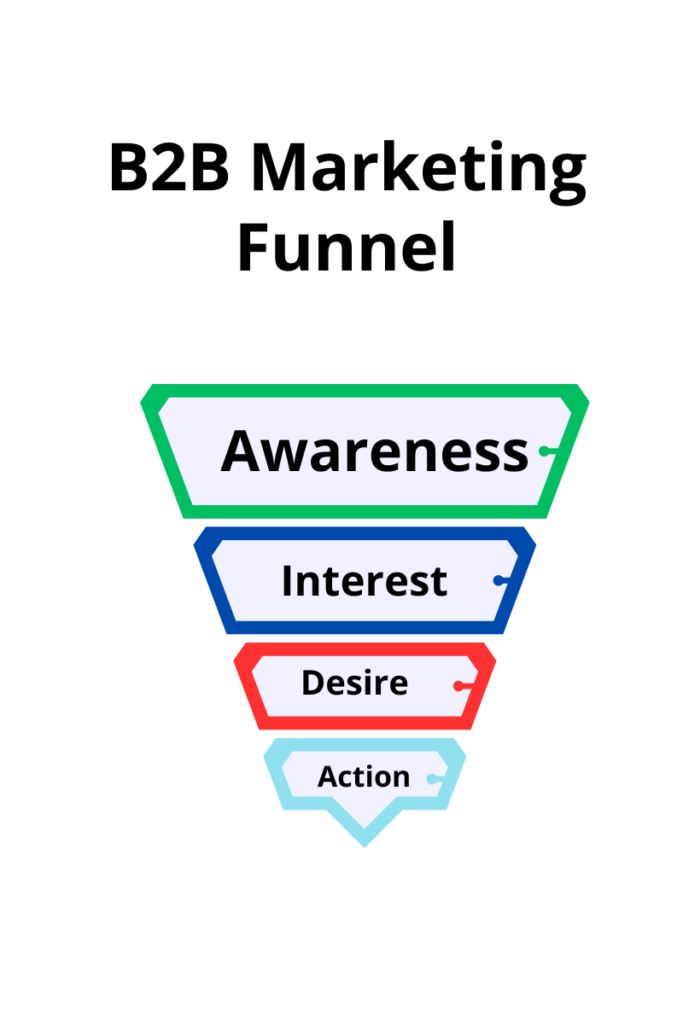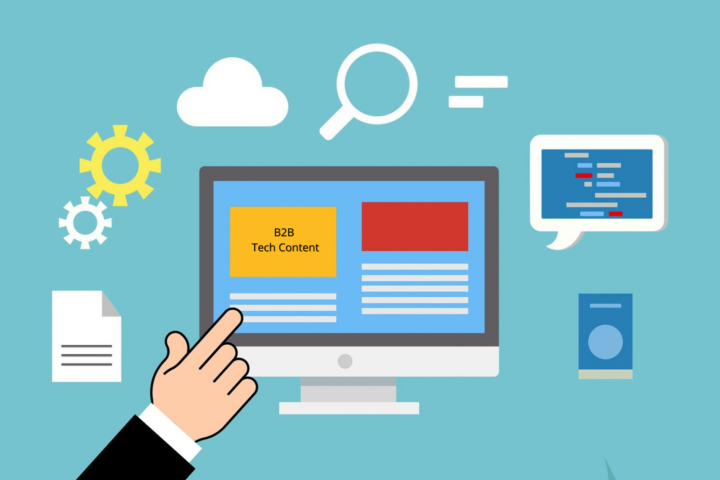ChatGPT is a relatively new tool that was launched as a prototype in November 2020.
In its short lifetime, ChatGPT has been able to help B2B marketers personalize conversations with customers and prospects, improve lead generation, and create high-quality content based on customer preferences.
But this tool, like others, has its lights and shadows when used.
So, in this article, I will shed more light on this AI tool and the role it could play in the B2B marketing team.
What role can ChatGPT play in a B2B marketing team?
ChatGPT plays a support role in a B2B marketing team. Here are some examples of how can be used for:
- Lead generation: ChatGPT can engage website visitors and qualify leads.
- Content creation: ChatGPT can assist in content creation by generating ideas, suggesting topics, and even drafting initial versions of blog posts, social media updates, and email newsletters.
- Market research: ChatGPT can analyze large volumes of data and extract insights to support market research efforts.
- Personalization: ChatGPT can provide personalized messaging to customers based on inputs on their preferences, purchase history, and browsing behavior.
- A/B Testing and Optimization: ChatGPT can assist in A/B testing by helping to design experiments and analyze results.
It’s important to note that while ChatGPT can be a useful asset to a marketing team. However, it’s best used as a tool to augment human efforts, rather than replace human expertise and creativity.
This leads us to the question many of us in marketing have asked ourselves.
How to use ChatGPT in your B2B marketing funnel?

Also, ChatGPT can be your best friend because it’s a powerful tool for assisting you in performing various functions across each stage of the B2B marketing funnel, for instance:
Awareness
In the first stage of the B2B marketing funnel you can use it for:
- Content generation: Use ChatGPT to create informative and engaging content, such as blog posts, articles, and whitepapers that educate prospects about your industry and solutions.
- Social media interaction: Employ ChatGPT to manage social media interactions, respond to queries, and participate in discussions related to your products or services.
Interest
In the second stage of the B2B marketing funnel you can use it for:
- Personalized recommendations: Utilize ChatGPT to provide personalized product or service recommendations based on the prospect’s needs and pain points.
- Interactive demos: Create interactive demos using ChatGPT to showcase how your offerings can address specific challenges faced by potential clients.
Desire
In the third stage of the B2B marketing funnel you can use it for:
- Storytelling: Implement ChatGPT to tell compelling stories and case studies that highlight successful implementations of your solutions and demonstrate their value.
- Real-Time Q&A: Use ChatGPT to answer specific questions potential clients may have about your offerings and the benefits they can bring.
Action
In the fourth stage of the B2B marketing funnel you can use it for:
- Lead nurturing: Set up automated chat sequences powered by ChatGPT to nurture leads and guide them through the decision-making process, addressing objections along the way.
- Discounts and offers: Share exclusive discounts and limited-time offers through ChatGPT to encourage prospects to take action promptly.
Measuring the activities of your B2B
Whether written by ChatGPT or not, there’s no escaping measuring the performance of your B2B efforts.
That´s why ChatGPT can be useless and probably your worst enemy because you need a specialised tool for measuring your B2B efforts, such as Dreamdata, Full Circle Insights, Bizible or Terminus.
How to write effective marketing ChatGPT prompts?
One of the biggest problems if you use ChatGPT is that who is writing isn’t you anymore.
That’s why you have to “train your dragon” correctly to write something similar to you.
So, you need to follow these practices for becoming a prompt wizard without losing your essence.
Best practices for writing prompts
To get the most out of ChatGPT, follow these 10 best practices for writing prompts:
- Precision is key: Clearly articulate your requirements or queries to ensure the AI comprehends the context and generates pertinent responses. Furnishing explicit prompts with detailed particulars can diminish ambiguity.
- Structured approach: For intricate inquiries or content creation requests, fragment your prompt into manageable segments or furnish a roster of elements you wish to incorporate in the response.
- Format preferences: If you have a favoured style or format for the answer, kindly indicate it in your prompt.
- Cite sources: If you necessitate information validated by research, expressly request ChatGPT to provide sources or references. Nonetheless, verify the links, as they can occasionally be inactive.
- Concise responses: Should you require a succinct response, specify the desired length—e.g., “in one paragraph” or “in 100 words.”
- Refinement process: If the initial response proves unsatisfactory, refine your prompt or pose follow-up questions to attain the desired output.
- Embrace experimentation: Feel unrestrained to explore diverse approaches and formulations to ascertain the most effective means of conveying your requirements to the AI.
- Flexibility is key: ChatGPT is a tool that necessitates adjustments to prompts and instructions for optimal outcomes. Don’t hesitate to rephrase or provide supplementary context if the AI initially misconstrues your request.
- Versatile roles: You can enlist ChatGPT as a writer, editor, tutor, code assistant, conversational partner, and language translator.
- Tonal variation: You can request an array of tones—be it formal, casual, persuasive, descriptive, humorous, emotional, technical, and beyond. Just specify your desired tone (e.g., “In a humorous tone, elucidate…”) in your prompt.
This leads us to the question many of us in marketing have asked ourselves.
Is ChatGPT going to take over our jobs?
It’s a difficult question to answer right now, but what we do know is that this AI tool is here to stay and is already changing the paradigm of B2B marketing.
From my point of view, I don’t think there will be a disappearance of jobs but the reinvention of many of them.
New jobs will also appear, such as:
- Marketing Data Scientist,
- Generative Content Designer,
- Chatbots and Virtual Assistant Specialist
- Marketing AI Strategist
All these new jobs that will appear are a clear example that people won’t be replaced by AI tools. But they will be replaced by people who use better AI tools.
Final thoughts about ChatGPT
In summary, ChatGPT can be one more member of your marketing team that helps you with your daily marketing tasks and thus becomes your best friend. But also it can be your worst enemy when it comes to measuring those B2B efforts.
What is clear is that AI tools have come to revolutionize the world of marketing and that marketers around the world will have to adapt to this change if they want to continue keeping their jobs.
Let me guide you to maximise the potential of ChatGPT and make it your marketing team’s best ally.

